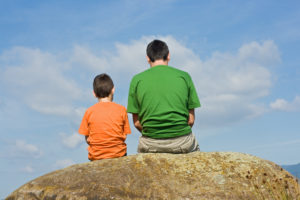The Power of Increasing Vulnerability
How comfortable are you having difficult conversations?
How willing are you to share your emotions and expose yourself?
How able are you take a chance, knowing that you might fail?
And what about your kids, how willing are they to do these three things?
According to Brené Brown, the definition of VULNERABILITY is: Uncertainty, Risk and Emotional Exposure.
You may well have heard of Brené Brown – Author and Researcher of difficult topics such as shame and vulnerability.
In the past I wrote about the six stages of attachment, as outlined by attachment theory and Dr. Gordon Neufeld, with the final stage of attachment being vulnerability.
If you think about it – we are only vulnerable with a handful of people in our lives and this is the same for our children.
We want to be amongst their handful of people, with whom, they feel vulnerable but it’s not an easy task, especially as they enter the teen years.
I loved Brené Brown’s show on Netflix: Brené Brown – The Call to Courage. It is excellent and I highly recommend it.
(If you’re in a relationship then it would be very valuable to watch it with your partner and if you’re single it would also be very worthwhile to watch.)
The Call to Courage is all about the benefits of being vulnerable, as hard as that is. Brené brings many members of the audience to tears when she says: “Vulnerability feels hard, scary and dangerous but it’s not as hard, scary and dangerous as getting to the end of our lives and asking “What if I had shown up?”
(Her TED talk on Vulnerability is also excellent and is now ranked in the top five of all TED talks with over 62 million views!) Clearly, there is a universal need to work on increasing our vulnerability.
Brené Brown is encouraging us all to have the difficult conversations that require courage over comfort.
She points out that in the past vulnerability was seen as a weakness and courage was seen as a strength, but the irony is that you can’t be courageous without being vulnerable!
To experience joy and love takes vulnerability. If we’re not experiencing joy and love then we’re suffering. If we’re not being vulnerable then we take our suffering and pain out on others to avoid being vulnerable.
Brené also importantly points out that being “vulnerable” without boundaries is not actually being vulnerable. If we start sharing too much too quickly with someone, with whom we’ve not developed a close relationship, then we are just unloading our pain onto them.
Back to our families and increasing vulnerability…
Are you able to share with your partner or your kids when things are really bothering you, or do you “bottle up” or lash out?
Brené suggests that when things are bothering us, we start off by saying something like:
“I’d really like to talk to you because I’ve got this story going on in my head that says…”
It’s important to acknowledge that it’s a story in our head, because it is just our perspective and we really don’t know the other person’s perspective, until we share ours and they share theirs.
By starting the conversation in this way, it is less threatening for the other person to hear. It also allows us to be more vulnerable as we share right from our heart and mind.
Brené explains that being vulnerable does create a physiological reaction within us. We can physically feel ourselves being vulnerable because it feels scary. At this point we can feel the vulnerability and start dress-rehearsing the worst case scenario or we can transform the scary feelings by feeling gratitude that we are sharing.
For people with anxiety, being vulnerable is even more challenging. Individuals who are more anxious usually want to be seen as perfect and find failure intolerable. They are quick to predict worst-case scenarios. They want to mask and blend in, but “fitting in” is not the same as belonging.
“The opposite of belonging is fitting in. Belonging is belonging to yourself first – true belonging doesn’t require you to change who you are, it requires you to BE WHO YOU ARE.” ~ Brené Brown
Do you know what is the most terrifying human emotion?
I think the answer will surprise you…
It’s JOY.
Brené says we’re terrified of joy because we’re worried that if we have joy then sorrow must follow, or that someone will just come and whip away our joy.
She quotes Stuart Brown who defines PLAY as “time spent without purpose”. Brené jokes that to her this sounds like the definition of an anxiety attack! But really, she encourages us to all have frivolous fun = joy and gratitude for every moment.
I hope you’ll take time this week to watch her TED Talk and/or Netflix, so we can be part of the change to do “what it takes to choose courage over comfort in a culture defined by scarcity, fear, and uncertainty.” She’s also a very engaging and funny speaker so it’s easy to watch and doesn’t feel too heavy.
Have fun playing and being joyful,
Warmly,

Want to Connect?
Subscribe now to receive free weekly parenting tips and inspiration.







